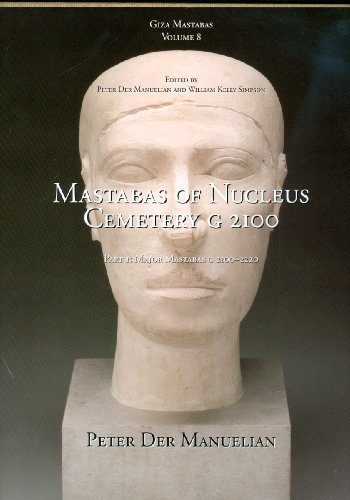Product desciption
Giza Mastabas Viii Mastabas Of Nucleus Cemetery G 2100 Major Mastabas G 21002220 Peter Der Manuelian by Peter Der Manuelian 9780878467549, 0878467548 instant download after payment.
West of the Great Pyramid at Giza, the Fourth Dynasty pharaoh Khufu laid out scores of mastaba tombs for the elite members of ancient Egyptian society. Specific clusters of tombs seem to form architectural and archaeological units, prompting the modern division of the Giza Necropolis into discrete nucleus cemeteries. This book interprets the complete archaeological record of the mastabas of Cemetery G 2100, one of the six nucleus cemeteries at Giza. As a key to understanding Old Kingdom mortuary development at Giza, it explores the distinguishing features of such a grouping of tombs and tomb owners: relative chronology and individual artistic styles; common administrative titles, possible familial connections to the king; and, the relationship of the earlier, major mastabas to the subsequent, minor burials surrounding them. More than a century has elapsed since the fourteen major mastabas and about sixty-two smaller subsidiary tombs of Cemetery G 2100 were first excavated by the Harvard University-Boston Museum of Fine Arts Expedition at Giza under George A. Reisner (1867-1842). In addition, the southern edge of Cemetery G 2100 fell within the excavation concession granted to the German/Austrian expedition under Georg Steindorff and then Hermann Junker, on behalf of institutions in Leipzig, Hildesheim, and Vienna. The author has undertaken a re-examination of this cemetery. The results incorporate excavations between 1845 and 1940, and include objects from museums in Berlin, Birmingham, Boston, Cairo, Copenhagen, Hildesheim, Paris, Philadelphia, Rome, and Vienna. Art-historical treasures, significant artifacts, and unique architectural elements unattested anywhere else at Giza are set in their proper archaeological context, often for the first time. Examples include the Boston reserve head of Nefer (mastaba G 2110); Nefer's chapel reliefs spread today across three continents; one of the best-preserved and oldest female mummies (G 2220); and, two complete chapels removed to Europe-Merib in Berlin (G 2100-I), and Kaninisut I in Vienna (G 2155). The chapel of Merib, long known only from C.R. Lepsius' illustrations from the 1840s, is represented in new color photography prepared especially for this volume. The book contains historical and interpretive remarks, followed by individual chapters on the major mastabas. Several detailed 3D computer illustrations reconstruct unique views of the tombs from above and below ground. Part 2 of "Giza Mastabas 8" will describe the later, subsidiary structures in Cemetery G 2100. Both volumes enhance the much larger corpus of information available, in undigested form, on the Museum of Fine Arts' Giza Archives Project Web site. The work should prove useful to those investigating Old Kingdom history and chronology, mortuary architecture, ceramic and faunal remains, inscriptional material, and art-historical style.


